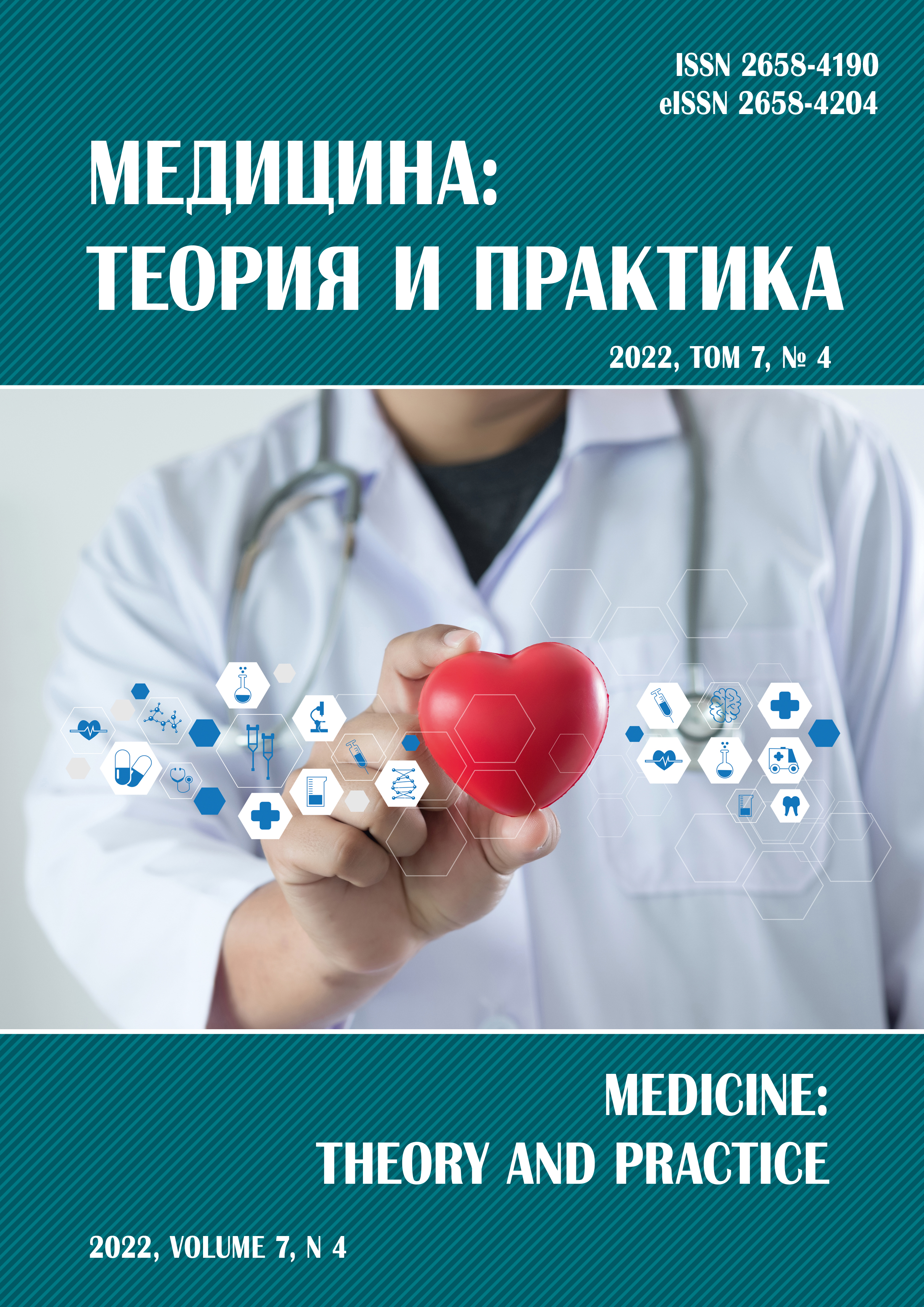PROGNOSTIC SIGNIFICANCE OF ACUTE KIDNEY INJURY IN PATIENTS WITH MYOCARDIAL INFARCTION
Abstract
Acute kidney injury (AKI) is a common comorbid condition of acute myocardial infarction (AMI) that complicates the diagnosis and treatment of this disease. Materials and methods. 193 patients with AMI after PCI (percutaneous coronary intervention), divided into 2 groups: 123 patients with AMI and signs of AKI and 70 patients without AKI, were studied at the Altai Regional Cardiology Dispensary. All laboratory parameters were determined: C-reactive protein (CRP), troponin I, natriuretic peptide (NT-proBNT), microalbuminuria (MAU), GFR. In the presence of AKI criteria, KIM-1 (Kidney Injury Molecule-1) and IL-18 (interleukin 18) were evaluated. During the year, repeated cardiovascular events (CVS) and progression of CHF were studied. Results. In patients with AMI and AKI, the levels of KIM-1, IL-18, CRP, NT-proBNT, MAU were statistically higher than in the group without AKI. KIM-1, IL-18, GFR are interconnected with CRP, troponin I, MAU, NT-proBNT; IMT-1 with troponin I and NT-proBNT (r = 0.21, p = 0.022 and r = 0.29, p = 0.031) and creatinine, GFR with NT-proBNT (r = -0.22, p = 0.015), IL-18 with NT-proBNT (r = 0.18, p = 0.045), MAU with troponin I and CRP (r = 0.20, p = 0.048 and r = 0.29, p = 0.001). Repeated CV events within a year after AMI were more common in the group with AKI: unstable angina pectoris was (26 (21.1 %), p = 0.010) patients, repeated MI was (19 (15.4 %), p = 0.006), CHF progression was (20 (16.2 %), p = 0.013) patients. The set of factors included in the formula for calculating the cardiovascular system were - the level of CRP, NT-proBNT, IMT-1, MAU, BMI, MI in history. ROC analysis determined sensitivity 80 % and specificity 60 %. Conclusion. the determination of KIM-1, IL-18 will allow diagnosing AKI at the “preclinical” stage. Associations between prognostic markers and AKI rates suggest an association between cardiac and renal dysfunction. After a year of observation, recurrent coronary events, progression of CHF were more common in patients with AKI.



